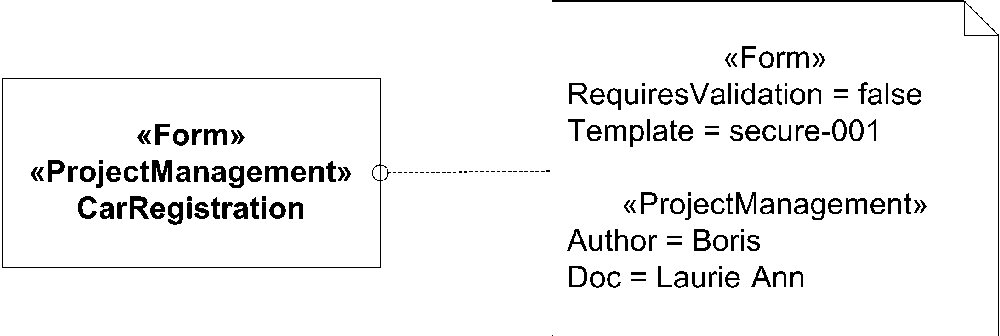Tagged Values
Having established an element's role within a system with a stereotype, the element likely needs information not available from the core UML, to fulfill its role. The stereotype defines a number of tagged values. Each tagged value is typed with a datatype—number, string, boolean, or user-defined enumeration. The upcoming section "UML Profiles" shows one way in which you might record, or define, the tagged values that you wish to include in a stereotype.
When you show them in a diagram, place the tagged values in a note element that is connected to the declaring element with a dashed line. Figure 11-5 shows the case of multiple stereotypes on one element. To keep the stereotypes and the corresponding tagged values clear, each stereotype is mentioned, and the tagged are values listed separately.

Figure 11-5. Tagged values shown classified by their owning stereotype
At first, you may confuse tagged values with attributes, but they exist at a different level of abstraction. Attributes, defined in the design model (M1), exist in the runtime system (M0). Tagged values, defined in the profile (M2), exist only in the design model (M1). The tagged values may provide hints to help the generation of code, either by human or machine. A tagged value of {optimize=space} will probably affect the code ultimately, although the actual value itself never appears in the code.
Get UML 2.0 in a Nutshell now with the O’Reilly learning platform.
O’Reilly members experience books, live events, courses curated by job role, and more from O’Reilly and nearly 200 top publishers.

